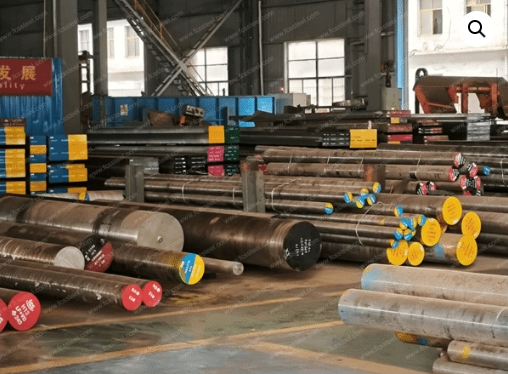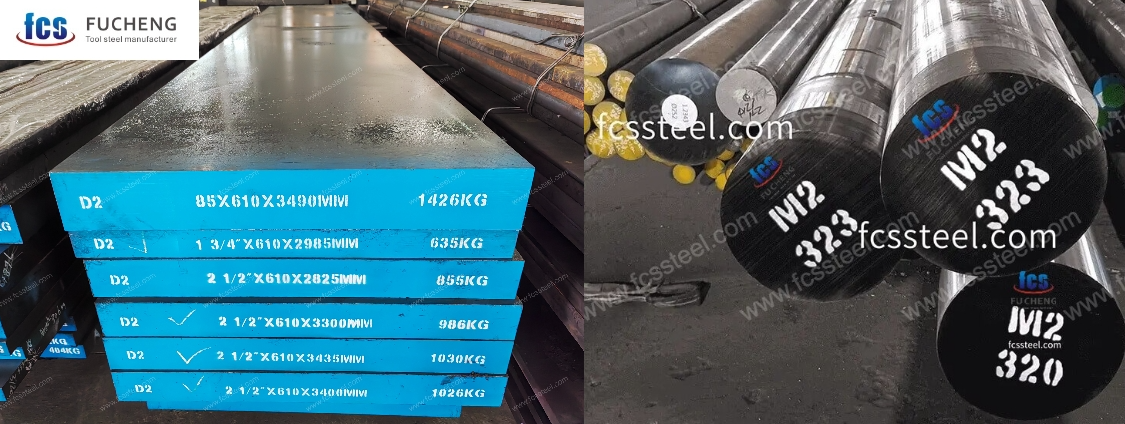Ever wondered why some knife brands thrive while others break even? I believe the secret lies in one critical decision: choosing the right steel. For manufacturers, picking between D2 steel, VG10, 440C steel, and M2 steel isn’t just about sharpness or durability. It’s about balancing material costs and production challenges. It’s also about what customers want. Each steel promises something different. But here’s the catch: the flashiest option isn’t always the most profitable one. Based on my experience, the right choice depends on your specific goals and market.

Introduction: Why Cost-Effectiveness Matters in Knife Manufacturing
In the modern cutlery industry, the choice of steel determines not only a knife’s performance but also its production efficiency and profitability. For manufacturers balancing cost, quality, and brand reputation, selecting between D2, VG10, 440C, and M2 steels can be a strategic decision.
Each of these steels has distinct advantages:
- D2: a semi-stainless tool steel known for excellent wear resistance and edge retention.
- VG10: a premium Japanese stainless steel prized for corrosion resistance and fine edge stability.
- 440C: a classic martensitic stainless steel, widely used for decades due to its affordability and balanced performance.
- M2: a molybdenum-based high-speed steel used in industrial cutting tools that can withstand high temperatures.
This article evaluates these steels from a manufacturer’s perspective, focusing on five critical factors:
- Raw material cost
- Machining and grinding difficulty
- Heat treatment complexity and cost
- Yield rate (scrap or reject ratio)
- Customer feedback and market positioning
The goal is to identify which steel delivers the best cost-performance ratio in large-scale cutlery production.
1. Raw Material Cost Comparison

1.1 Market Prices and Alloy Composition
As of mid-2025, average global prices per kilogram (industrial-grade, unprocessed bar stock) are approximately:
| Steel Type | Typical Price (USD/kg) | Key Alloy Elements |
|---|---|---|
| D2 Tool Steel | $4.00–$5.50 | 1.5% C, 12% Cr, 1% Mo, 1% V |
| VG10 Stainless | $8.00–$12.00 | 1% C, 15% Cr, 1% Mo, 1.5% Co, 0.3% V |
| 440C Stainless | $5.00–$6.50 | 1.1% C, 17% Cr, 0.75% Mo |
| M2 High Speed Steel | $6.00–$8.00 | 0.9% C, 4% Cr, 5% Mo, 6% W, 2% V |
Analysis:
- D2 is the most cost-efficient semi-stainless option, offering high wear resistance at a moderate price.
- VG10 is the most expensive due to cobalt and tighter composition control, reflecting its use in high-end Japanese knives.
- 440C remains a cost-effective stainless steel for mid-range knives.
- M2 costs more than D2 and 440C because of tungsten and molybdenum content, though its price can fluctuate based on global alloy markets.
From a cost standpoint, D2 and 440C provide the best value for volume production. VG10 and M2 are typically reserved for premium or industrial applications.
2. Machining and Grinding Difficulty
Machinability is a key production factor that affects both tool wear and cycle time.
| Steel | Machinability Rating (AISI Scale, 100 = 1212 Steel) | Remarks |
|---|---|---|
|
D2 |
~45% |
Hard carbides cause tool wear during milling and grinding |
|
VG10 |
~55% |
Finer grain size improves finish, but work hardens easily |
|
440C |
~60% |
Good machinability for stainless, easy polishing |
|
M2 |
~35% |
Very hard; requires carbide tools or EDM for profiling |
Insights:
- D2 and M2 are difficult to machine, which increases tooling cost and processing time.
- 440C is notably easier to machine, especially in the annealed condition, making it ideal for mass production.
- VG10 is machinable but requires slow feed rates to prevent edge chipping due to its hardness potential.
Conclusion:
From a manufacturing standpoint, 440C offers the lowest machining cost, followed by VG10. D2 and M2 increase production cost by 10–25% due to frequent tool changes and slower cutting speeds.
3. Heat Treatment Complexity and Cost
Proper heat treatment is essential to unlock each steel’s performance. Complexity increases both energy cost and risk of distortion.
| Steel | Typical Hardness After Heat Treatment (HRC) | Heat Treatment Complexity | Notes |
|---|---|---|---|
| D2 | 58–62 | Medium | Requires controlled atmosphere; risk of distortion |
| VG10 | 59–61 | Medium | Multi-step tempering for fine carbide balance |
| 440C | 56–59 | Low | Reliable and consistent; simple air hardening |
| M2 | 62–66 | High | Needs precise control and high-temperature tempering |
Cost implications:
- M2 requires heat treatment above 1200°C (2200°F) and multi-stage tempering, resulting in high furnace time and energy cost.
- D2 also needs protective atmospheres to prevent decarburization.
- 440C offers the simplest and most repeatable heat treatment, minimizing rejects.
- VG10 is stable but must be handled carefully to retain its fine-grain microstructure.
Estimated per-batch heat treatment cost (100 kg knives):
- 440C: $45–$55
- D2: $60–$70
- VG10: $65–$80
- M2: $80–$100
Thus, 440C again proves to be the most cost-efficient in thermal processing.
4. Yield Rate and Scrap Ratio
Yield rate directly affects profitability. Difficult-to-process steels tend to have higher rejection rates due to cracking, warping, or inconsistent hardness.
| Steel | Average Yield (Finished Knives per 100 Blanks) | Main Defect Risk |
|---|---|---|
| D2 | 94–96% | Heat treatment cracks, grinding burn |
| VG10 | 93–95% | Edge micro-chipping, polishing defects |
| 440C | 96–98% | Minimal; stable across large batches |
| M2 | 90–93% | Warping, brittleness if overheated |
Interpretation:
- M2 has the lowest yield, mainly due to its brittleness during finishing.
- 440C performs best, especially for manufacturers targeting high-volume kitchen knives.
- D2 and VG10 are stable but require skilled heat treatment to minimize reject rates.
For production plants where every 1% improvement in yield translates to thousands of dollars annually, 440C is again the cost-effective winner.
5. Customer Feedback and Market Perception

From a manufacturer’s viewpoint, customer satisfaction and market positioning determine long-term profitability.
5.1 D2: Industrial Reputation, Semi-Stainless Drawback
- Known for superior wear resistance and edge retention.
- However, users often report rust spotting or staining in humid climates.
- Favored in outdoor knives and industrial cutting tools, not daily-use kitchen knives.
5.2 VG10: Premium Brand Recognition
- Widely used in Japanese chef knives.
- Highly praised for corrosion resistance and fine edge stability.
- Customers expect premium pricing — higher profit margin per unit, but smaller market segment.
5.3 440C: Balanced Performance, Reliable Feedback
- Popular for mid-range culinary knives.
- Buyers appreciate easy sharpening and rust resistance.
- Some enthusiasts note faster edge wear compared to D2 or VG10, but it remains the best “value-for-money” option.
5.4 M2: Industrial but Not Culinary
- Used mainly in machine tools, drills, and industrial cutters.
- Excellent high-temperature hardness but too brittle for thin kitchen blades.
- Rarely chosen for cutlery due to low toughness and high production cost.
Conclusion:
- For consumer cutlery, VG10 dominates the premium segment.
- 440C wins the mid-range and OEM categories.
- D2 holds a niche role in outdoor knives.
- M2 is largely industrial, not culinary.
6. Cost-Effectiveness Summary (Manufacturer’s View)
| Criteria | D2 | VG10 | 440C | M2 |
|---|---|---|---|---|
| Raw Material Cost | ★★★★☆ | ★★☆☆☆ | ★★★★☆ | ★★★☆☆ |
| Machinability | ★★☆☆☆ | ★★★☆☆ | ★★★★★ | ★☆☆☆☆ |
| Heat Treatment Cost | ★★★☆☆ | ★★★☆☆ | ★★★★★ | ★★☆☆☆ |
| Yield Rate | ★★★★☆ | ★★★★☆ | ★★★★★ | ★★☆☆☆ |
| Customer Feedback | ★★★★☆ | ★★★★★ | ★★★★★ | ★★☆☆☆ |
| Overall Cost-Effectiveness | 4.2/5 | 3.9/5 | 4.6/5 | 2.8/5 |
Final Verdict:
- 🥇 440C Steel offers the highest cost-effectiveness for large-scale knife production.
- 🥈 D2 Steel provides excellent wear resistance where corrosion is not critical.
- 🥉 VG10 Steel remains the best premium option for high-end chef knives.
- 🚫 M2 Steel is technically superior but economically inefficient for cutlery.
7. Strategic Considerations for Knife Manufacturers

7.1 Market Positioning
If your target market emphasizes performance and prestige, VG10 remains ideal. However, for OEM and mass-market knives, D2 and 440C provide better ROI.
7.2 Production Infrastructure
Factories equipped with high-precision heat treatment furnaces can manage D2 and VG10 efficiently. Smaller workshops may prefer 440C due to lower failure rates and simpler processes.
7.3 Global Supply Stability
440C and D2 are readily available worldwide, with stable pricing. VG10 is mostly produced in Japan, which can introduce supply chain delays and import duties.
7.4 Environmental and Sustainability Factors
High-alloy steels like M2 and VG10 require more energy-intensive production, leading to higher carbon footprints. 440C, being simpler and more common, has a lower environmental impact per blade.
Conclusion: Balancing Quality, Efficiency, and Cost
From the perspective of a modern cutlery manufacturer, the most cost-effective steel is not necessarily the hardest or most exotic one — it’s the alloy that provides the best balance between processing efficiency, performance, and customer satisfaction.
- For mass-market kitchen knives: 440C provides consistent quality, low waste, and high yield.
- For mid-to-high-end outdoor or tactical knives: D2 offers unmatched wear resistance with manageable cost.
- For professional chef knives: VG10 delivers luxury performance at a higher but justifiable price point.
- For industrial cutters: M2 remains indispensable — but not for table knives.
In short, the optimal steel depends on the manufacturer’s product strategy.
But when viewed strictly from a cost-effectiveness lens, 440C stainless steel stands out as the smartest business choice for most cutlery manufacturers worldwide.
